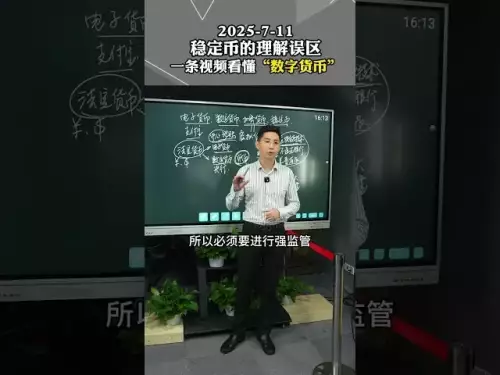-
 Bitcoin
Bitcoin $111200
0.44% -
 Ethereum
Ethereum $4302
0.12% -
 XRP
XRP $2.835
0.93% -
 Tether USDt
Tether USDt $1.000
0.06% -
 BNB
BNB $870.9
1.41% -
 Solana
Solana $203.8
0.29% -
 USDC
USDC $0.9999
0.03% -
 Dogecoin
Dogecoin $0.2178
1.53% -
 TRON
TRON $0.3284
-0.90% -
 Cardano
Cardano $0.8288
0.92% -
 Hyperliquid
Hyperliquid $47.24
1.45% -
 Chainlink
Chainlink $22.34
0.67% -
 Ethena USDe
Ethena USDe $1.001
0.05% -
 Sui
Sui $3.391
1.19% -
 Bitcoin Cash
Bitcoin Cash $598.8
-2.18% -
 Stellar
Stellar $0.3581
0.37% -
 Avalanche
Avalanche $24.59
1.88% -
 Hedera
Hedera $0.2199
1.96% -
 Cronos
Cronos $0.2631
-2.42% -
 UNUS SED LEO
UNUS SED LEO $9.490
-0.66% -
 Litecoin
Litecoin $114.0
2.18% -
 Toncoin
Toncoin $3.090
0.86% -
 Shiba Inu
Shiba Inu $0.00001237
0.84% -
 Polkadot
Polkadot $3.859
1.53% -
 World Liberty Financial
World Liberty Financial $0.2393
25.43% -
 Uniswap
Uniswap $9.388
1.32% -
 Dai
Dai $0.9999
0.02% -
 Ethena
Ethena $0.7417
-0.13% -
 Monero
Monero $269.7
-0.63% -
 Aave
Aave $301.5
0.20%
ICO vs. IDO vs. IEO: A Simple Comparison
ICOs, IEOs, and IDOs each offer distinct crypto fundraising approaches, with varying levels of security, accessibility, and decentralization for projects and investors.
Sep 07, 2025 at 03:19 pm
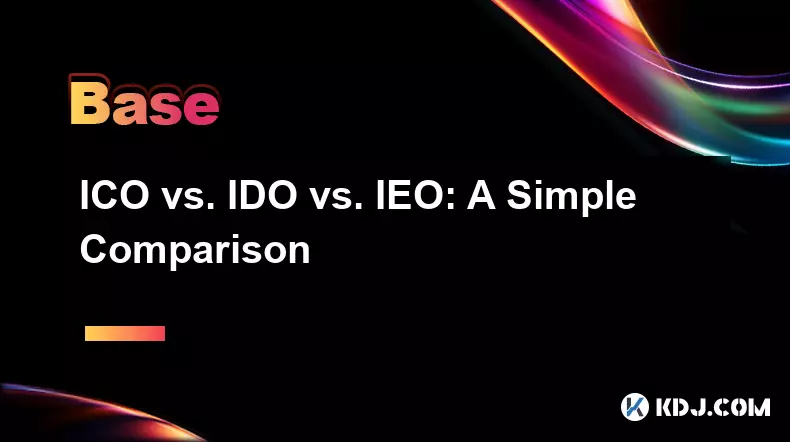
Understanding the Basics of Crypto Fundraising Models
1. Initial Coin Offerings (ICOs) emerged as one of the earliest methods for blockchain projects to raise capital. In an ICO, tokens are sold directly to investors, usually in exchange for established cryptocurrencies like Bitcoin or Ethereum. These sales are conducted on the project’s own platform, with minimal oversight, making them accessible but also risk-prone.
2. Investors participate by sending funds to a designated wallet address and receiving tokens based on a predefined exchange rate. Smart contracts automate this process, ensuring transparency in token distribution. However, the lack of regulatory compliance has led to numerous scams, prompting the industry to develop more secure alternatives.
3. The decentralized nature of ICOs empowers startups to bypass traditional financial intermediaries. This democratization of fundraising allows global participation, but it also places the burden of due diligence entirely on the investor. Projects often release whitepapers detailing their vision, tokenomics, and roadmap to attract interest.
4. Because ICOs operate without third-party validation, the credibility of a project relies heavily on its team, technology, and community support. Some notable successes like Ethereum originated from ICOs, but many others failed to deliver on promises, tarnishing the model’s reputation over time.
Differences in Launch Platforms and Accessibility
1. Initial Exchange Offerings (IEOs) shift the fundraising process to centralized cryptocurrency exchanges. Platforms like Binance and KuCoin host IEOs, managing token sales on behalf of projects. This adds a layer of trust, as exchanges conduct preliminary vetting before listing a token.
2. Participants in an IEO purchase tokens directly through their exchange accounts, eliminating the need for external wallets or manual transactions. This streamlined process reduces technical barriers and enhances security, as users benefit from the exchange’s infrastructure and support systems.
3. Since the exchange handles Know Your Customer (KYC) and anti-money laundering (AML) checks, IEOs tend to be more compliant with regulatory standards. Projects gain credibility by association, while investors feel more confident knowing that a reputable platform has approved the offering.
4. However, IEOs often require projects to pay substantial fees to the hosting exchange. This can limit access for smaller teams and create a gatekeeping dynamic where only well-funded or highly promising ventures get exposure. The centralization aspect also contradicts the ethos of decentralization upheld by many in the crypto space.
The Rise of Decentralized Launches: IDOs
1. Initial DEX Offerings (IDOs) take place on decentralized exchanges (DEXs) such as Uniswap, PancakeSwap, or dedicated launchpads like Polkastarter. Unlike IEOs, IDOs align more closely with blockchain’s decentralized principles, allowing projects to launch without relying on centralized intermediaries.
2. Funds raised during an IDO are typically pooled into liquidity pools immediately after the sale, enabling instant trading. This feature enhances market efficiency and reduces the risk of price manipulation post-launch, which was common in early ICOs.
3. IDO participants usually need to hold specific tokens or meet staking requirements to gain access. This creates a fairer distribution model by prioritizing active community members over speculative buyers. Projects benefit from building engaged user bases before going live.
4. Despite their advantages, IDOs face challenges related to scalability and security. Smart contract vulnerabilities can be exploited, and the rapid pace of launches makes it difficult for investors to conduct thorough research. Rug pulls and flash loan attacks remain real threats within the ecosystem.
Security and investor protection vary significantly across ICO, IEO, and IDO models, with IEOs generally offering the highest level of oversight due to exchange involvement.
Comparing Token Distribution and Market Entry
1. In ICOs, tokens are distributed according to a fixed schedule outlined in the smart contract. Post-sale, they may be listed on exchanges after a delay, leading to potential price volatility once trading begins.
2. IEO tokens are typically listed on the hosting exchange immediately after the sale concludes. This instant listing provides liquidity and enables price discovery right from the start, reducing uncertainty for early buyers.
3. IDOs integrate liquidity provisioning into the launch mechanism. A portion of the raised funds is automatically paired with the new token to create a trading pool, ensuring that the market opens with immediate depth and tradability.
4. The speed and efficiency of market entry differ across models. While IEOs offer quick access through centralized platforms, IDOs provide a trustless and automated path to liquidity. ICOs, by contrast, often require additional steps and partnerships to achieve exchange listings.
Frequently Asked Questions
What determines eligibility to participate in an IEO?Access to an IEO is typically granted to users who hold the exchange’s native token and complete identity verification. Some platforms also implement lottery systems or tier-based allocation to manage high demand.
Can anyone launch an IDO without approval?Most IDO launchpads require projects to undergo audits, team verification, and sometimes community voting before being allowed to raise funds. While more open than IEOs, they are not entirely permissionless.
Why did ICOs lose popularity despite their early success?A wave of fraudulent projects, lack of regulation, and poor post-launch performance led to investor distrust. High-profile failures and regulatory crackdowns in several countries diminished confidence in the ICO model.
Are IDO investors protected against smart contract risks?No formal protection exists. Investors rely on third-party audit reports and community reviews to assess risk, but vulnerabilities may still go undetected, leaving participants exposed to potential losses.
Disclaimer:info@kdj.com
The information provided is not trading advice. kdj.com does not assume any responsibility for any investments made based on the information provided in this article. Cryptocurrencies are highly volatile and it is highly recommended that you invest with caution after thorough research!
If you believe that the content used on this website infringes your copyright, please contact us immediately (info@kdj.com) and we will delete it promptly.
- Crypto Experts Eye BlockchainFX (BFX) as HBAR Struggles: The Next 1000x Opportunity?
- 2025-09-07 18:45:14
- WLFI Price Pump: Bank of America, Justin Sun, and Crypto Market Shenanigans
- 2025-09-07 18:25:12
- Altcoins in September 2025: Spotting the Top 3
- 2025-09-07 18:45:14
- Michael Saylor's Bitcoin Bet: From Bloomberg Billionaires List to Crypto King
- 2025-09-07 18:50:12
- Whale Alert: Decoding the WLFI Withdrawal and Crypto Market Moves
- 2025-09-07 18:50:12
- Dogwifhat (WIF) Price Prediction: Riding the Bullish Technical Setup to $2.50?
- 2025-09-07 18:55:11
Related knowledge
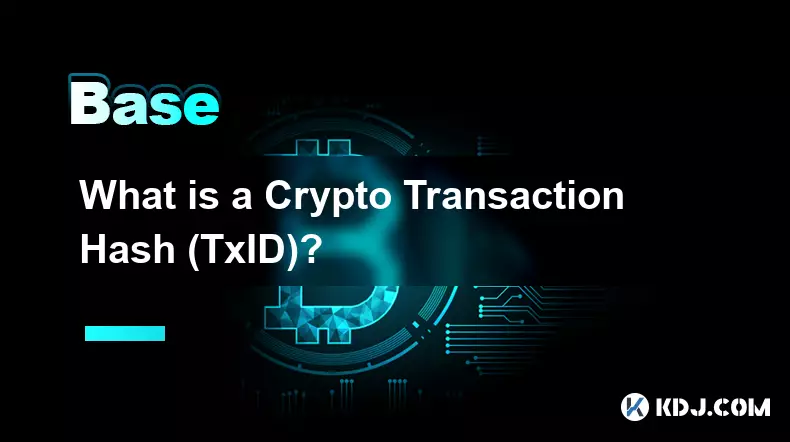
What is a Crypto Transaction Hash (TxID)?
Sep 07,2025 at 01:18pm
Understanding the Role of a Crypto Transaction Hash1. A crypto transaction hash, often referred to as TxID, is a unique identifier generated when a tr...

What is On-Chain and Off-Chain Data?
Sep 07,2025 at 04:55pm
Understanding On-Chain Data1. On-chain data refers to all information that is recorded directly on a blockchain. Every transaction, smart contract exe...
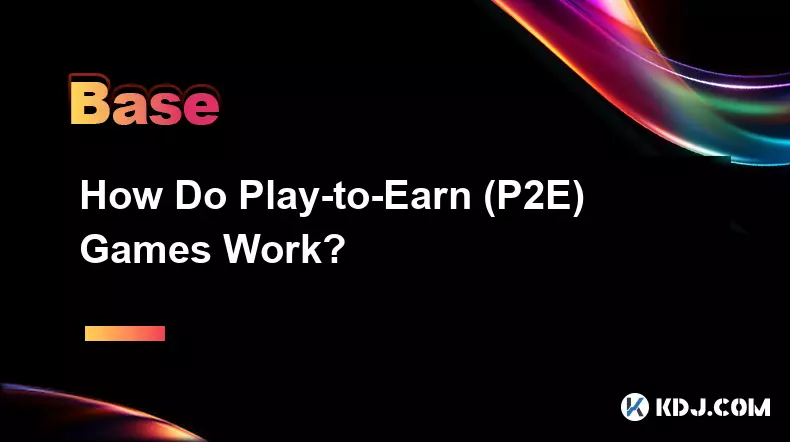
How Do Play-to-Earn (P2E) Games Work?
Sep 07,2025 at 10:54am
Understanding the Core Mechanics of Play-to-Earn Games1. Play-to-Earn (P2E) games operate on blockchain technology, allowing players to earn cryptocur...

ICO vs. IDO vs. IEO: A Simple Comparison
Sep 07,2025 at 03:19pm
Understanding the Basics of Crypto Fundraising Models1. Initial Coin Offerings (ICOs) emerged as one of the earliest methods for blockchain projects t...

What is Layer 1 and Layer 2 in Blockchain?
Sep 06,2025 at 10:00pm
The Evolution of Decentralized Exchanges in the Crypto Ecosystem1. Decentralized exchanges (DEXs) have reshaped how traders interact with digital asse...
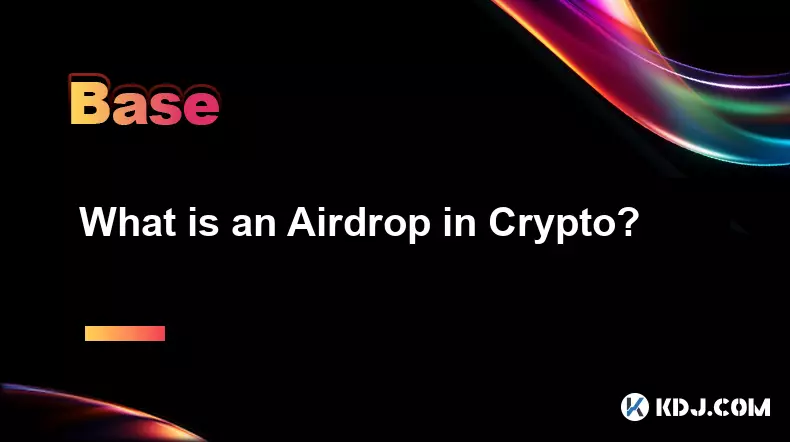
What is an Airdrop in Crypto?
Sep 07,2025 at 03:36am
What is a Crypto Airdrop?1. A crypto airdrop refers to the distribution of free tokens or coins to wallet addresses within the blockchain ecosystem. T...

What is a Crypto Transaction Hash (TxID)?
Sep 07,2025 at 01:18pm
Understanding the Role of a Crypto Transaction Hash1. A crypto transaction hash, often referred to as TxID, is a unique identifier generated when a tr...

What is On-Chain and Off-Chain Data?
Sep 07,2025 at 04:55pm
Understanding On-Chain Data1. On-chain data refers to all information that is recorded directly on a blockchain. Every transaction, smart contract exe...

How Do Play-to-Earn (P2E) Games Work?
Sep 07,2025 at 10:54am
Understanding the Core Mechanics of Play-to-Earn Games1. Play-to-Earn (P2E) games operate on blockchain technology, allowing players to earn cryptocur...

ICO vs. IDO vs. IEO: A Simple Comparison
Sep 07,2025 at 03:19pm
Understanding the Basics of Crypto Fundraising Models1. Initial Coin Offerings (ICOs) emerged as one of the earliest methods for blockchain projects t...

What is Layer 1 and Layer 2 in Blockchain?
Sep 06,2025 at 10:00pm
The Evolution of Decentralized Exchanges in the Crypto Ecosystem1. Decentralized exchanges (DEXs) have reshaped how traders interact with digital asse...

What is an Airdrop in Crypto?
Sep 07,2025 at 03:36am
What is a Crypto Airdrop?1. A crypto airdrop refers to the distribution of free tokens or coins to wallet addresses within the blockchain ecosystem. T...
See all articles





















![Daily Level for 9/7/2025: Momentum by EnenzoGD (WITH COIN) [GD Daily Video #809] Daily Level for 9/7/2025: Momentum by EnenzoGD (WITH COIN) [GD Daily Video #809]](/uploads/2025/09/07/cryptocurrencies-news/videos/daily-level-momentum-enenzogd-coin-gd-daily-video/68bcd9494f8d8_image_120_90.webp)


